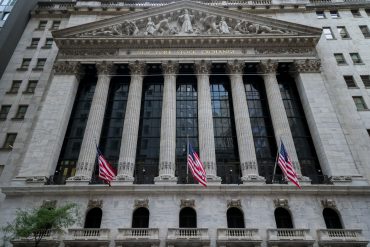
- Finance
- Pension Fund
- S&P 500
UBS: Pension Flows and AI Capex Support S&P 500 Valuations
5 minute read

Pension fund investments and corporate stock buybacks help sustain market stability despite elevated S&P 500 valuations
Key Takeaways
- UBS maintains optimistic outlook despite market vulnerabilities – The investment bank sees structural support from pension flows and corporate buybacks offsetting high valuations, with S&P 500 trading at over 22 times forward earnings.
- Global AI capex spending projected to reach $360 billion in 2025 – Tech sector growth continues despite earnings forecasts being trimmed from 16% to 12%, with major platforms like Microsoft Azure driving expansion.
- Nationwide distributes record £400 million to members – The building society announces third consecutive year of £100 bonus payments following 30% profit jump to £2.3 billion after Virgin Money acquisition.
Introduction
U.S. equity markets show resilience despite emerging vulnerabilities, with UBS strategists identifying structural support mechanisms that continue to underpin market stability. The investment bank’s latest analysis reveals that while high valuations and earnings pressures create potential headwinds, fundamental buying power from institutional investors remains robust.
UBS attributes this market strength to “significant structural buying that is price-insensitive and more powerful than tactical/price-sensitive sellers,” according to research led by Gerry Fowler. This assessment comes as markets navigate geopolitical tensions, trade uncertainties, and shifting monetary policies.
Key Developments
The S&P 500 currently trades at over 22 times forward earnings, a valuation level that typically raises concerns during periods of earnings downgrades. However, UBS notes that these revisions have stabilized across most sectors, with ongoing pension flows and corporate buybacks providing consistent market support.
Earnings downgrades primarily affect consumer-facing sectors including automotive and durable goods, largely due to tariff impacts. Manufacturing companies with flexible global supply chains have demonstrated stronger performance, with firms like Caterpillar achieving 20% margin expansion over three years through production shifts to Mexico and Southeast Asia.
The Federal Reserve’s anticipated rate cuts by year-end are expected to further boost manufacturing margins by reducing borrowing costs. A weaker U.S. dollar is seen as an additional structural tailwind that could amplify export profits for multinational corporations.
Market Impact
Tech sector performance remains bifurcated between legacy firms and innovation leaders. UBS highlights NVIDIA, Snowflake, and Microsoft as key beneficiaries of AI infrastructure investment, with these companies expanding capital expenditures significantly to enhance data center capacities.
Cloud revenue from major platforms continues to exceed expectations, with Microsoft Azure contributing to projected $265 billion in revenue for 2025. This growth trajectory supports UBS’s positive outlook on the tech sector despite macro uncertainties.
Consumer discretionary sectors face mixed pressures, with luxury brands like Apple demonstrating resilience through pricing power. Apple experienced only a 2% sales decline in China following tariff threats, illustrating how brand loyalty can mitigate price increase impacts.
Strategic Insights
UBS recommends focusing on growth defensives in communication services and utilities, alongside thematic cyclicals including AI, financials, and industrials. The firm advises against chasing the current rally, instead emphasizing selective positioning in companies demonstrating operational adaptability.
Top-rated stocks include Broadcom, Intercontinental Exchange, Oracle, and Meta, while personal products, durables, and automotive sectors continue to underperform. This sector rotation reflects broader structural shifts toward technology-enabled business models and away from traditional consumer-facing industries.
The macroeconomic environment remains in a moderate expansion phase, supported by improving OECD indicators and buoyant sector PMIs. These conditions favor companies with strong balance sheets and geographic diversification capabilities.
Expert Opinions and Data
UBS strategists emphasize that current market structure “continues to limit U.S. equity downside unless something seismic happens to upset these trends.” This assessment reflects confidence in underlying institutional buying patterns that have historically provided market stability during periods of uncertainty.
The investment bank warns that significantly weakening economic data could prompt balanced funds to sell equities in favor of bonds, potentially driving U.S. equities lower. However, according to Investing.com current structural support mechanisms are expected to limit downside risk.
Global AI capital expenditure projections show continued acceleration, with spending expected to reach $360 billion in 2025 and grow further to $480 billion by 2026. These investment levels underscore the sector’s growth potential despite near-term earnings adjustments.
Conclusion
UBS maintains that despite elevated valuations and sector-specific challenges, structural market support from institutional buyers provides a foundation for continued equity market resilience. The combination of AI-driven technology investments, corporate buyback programs, and pension fund flows creates a supportive environment for selective equity positioning.
The current market structure favors companies with operational flexibility and technological adaptation capabilities. Investors are positioned to benefit from ongoing secular trends in artificial intelligence adoption while navigating near-term volatility through defensive positioning in growth sectors.








